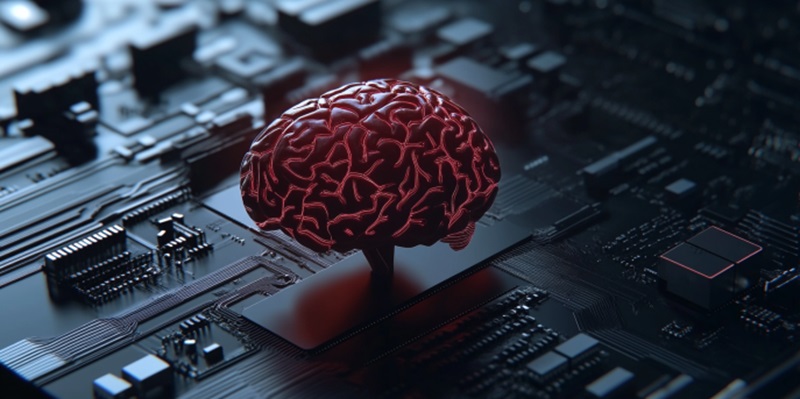As artificial intelligence (AI) systems continue to evolve and integrate into various sectors at an unprecedented pace, the importance of applying rigorous security measures becomes increasingly crucial. The rapid advancement of AI brings with it potential vulnerabilities and risks associated with misuse or exploitation. As these systems become more sophisticated, the potential consequences of unsecured AI become even more severe, necessitating a concerted effort to secure these technologies effectively. The need to safeguard AI technology is paramount to mitigate these risks effectively, ensuring not only the protection of sensitive data but also the integrity of AI-driven processes and decisions.
The Essence of Securing AI Systems
Securing AI systems involves more than just fortifying external perimeters with traditional cybersecurity measures. It encompasses safeguarding model training data from malicious inputs and addressing internal vulnerabilities that may arise from user errors or flawed prompts. As AI continues its evolution from providing intelligence and assisting in actions to ultimately attaining full autonomy, each stage introduces unique security challenges that require vigilant and proactive measures. Anticipating and addressing these potential threats at every phase ensure that AI systems remain secure, reliable, and trustworthy.
The future trajectory of AI indicates a shift toward greater autonomy, where AI agents will manage entire processes without human intervention. This evolution calls for a comprehensive understanding of the security measures required at each stage of AI development. By preemptively identifying and mitigating potential threats, organizations can implement robust security protocols that ensure the safe and effective deployment of AI systems. This proactive approach, focused on both external threats and internal vulnerabilities, is essential for maintaining the security and functionality of these advanced technologies.
A Holistic Framework for AI Security
A holistic framework for AI security is essential to address the diverse threats posed by advancing AI technologies. This framework, as delineated by experts like Anton Chuvakin, consists of four key components: models, applications, infrastructure, and data. These elements collectively form the foundation for safeguarding AI systems, ensuring a balanced approach to security without over-focusing on any single component. Each aspect plays a critical role in the overall security posture of AI systems, highlighting the need for a comprehensive strategy.
Focusing on any single component can lead to vulnerabilities in other areas, undermining the security efforts. For instance, a well-secured AI model might still be compromised if the application layer is vulnerable to SQL injections or if the underlying infrastructure lacks resilience. Therefore, addressing all four components—models, applications, infrastructure, and data—cohesively is crucial for comprehensive AI security. This balanced approach mitigates risks across the board and ensures that all potential vulnerabilities are accounted for and managed effectively.
Securing AI Prompts and Models
AI prompts, which guide the behavior of AI systems, are particularly vulnerable to adversarial attacks, making their security a critical aspect of AI model protection. Ensuring real-time validation and securing prompts from adversarial inputs are integral to maintaining the integrity and reliability of AI models. This aspect of security is inherently tied to the AI model itself, distinguishing it from traditional application, infrastructure, or data security issues. By focusing on prompt security, organizations can address a unique threat vector that could otherwise compromise AI functionalities.
Viewing prompt security as part of the broader model security domain enables organizations to implement targeted measures to protect against specific threats. This comprehensive approach helps maintain the overall robustness of AI systems and prevents potential exploitation through malicious inputs. By adopting strategies that ensure the security of both AI prompts and the underlying models, organizations can significantly strengthen their AI security posture, making their systems more resilient against emerging threats. This proactive stance is essential to safeguard the advancements brought about by AI technologies.
Evaluating AI Security During Procurement
For Chief Information Security Officers (CISOs) or Chief Information Officers (CIOs) evaluating the security of new AI tools during procurement, a comprehensive assessment of the four critical areas—models, applications, infrastructure, and data—is essential. This assessment must ensure that AI models are trained on clean, accurate data and are protected from adversarial inputs. It involves scrutinizing the data sources and methodologies used to develop these models to prevent any vulnerabilities from being embedded in the AI systems right from the initial stages.
Securing the applications that utilize these models to prevent exploitation through common vulnerabilities like injection attacks is equally important. This step includes evaluating the software and interfaces that interact with AI models to ensure they are designed with security in mind. Maintaining a robust and resilient infrastructure to support the secure deployment and operation of AI systems is another critical aspect. This involves ensuring that the hardware and network resources on which AI systems run are protected against unauthorized access and potential disruptions. Finally, protecting data integrity, securing data against breaches, and implementing strict access controls are necessary to prevent unauthorized use and data leakage. This multifaceted approach ensures that every component of the AI system, from data handling to model execution, is secured against potential threats.
Practical Strategies for Enhancing AI Security
As artificial intelligence (AI) systems advance and become integrated across various sectors at an unprecedented rate, the necessity for stringent security measures is increasingly vital. The swift progress in AI technology introduces potential vulnerabilities and risks related to misuse or exploitation. With the rising sophistication of these systems, the potential repercussions of unsecured AI become ever more severe. Thus, it is essential to take comprehensive steps to secure these technologies effectively. Safeguarding AI is crucial to mitigate these risks properly. This not only protects sensitive data but also ensures the integrity of AI-driven processes and decision-making.
Furthermore, as AI continues to permeate different industries, it is imperative to establish and maintain robust security protocols to prevent any malicious activities that could compromise the system. The development of AI brings immense benefits, but without proper security, those benefits could be overshadowed by significant threats. Therefore, a dedicated effort to implement rigorous security measures is essential to preserving the trust and reliability of AI technologies.

